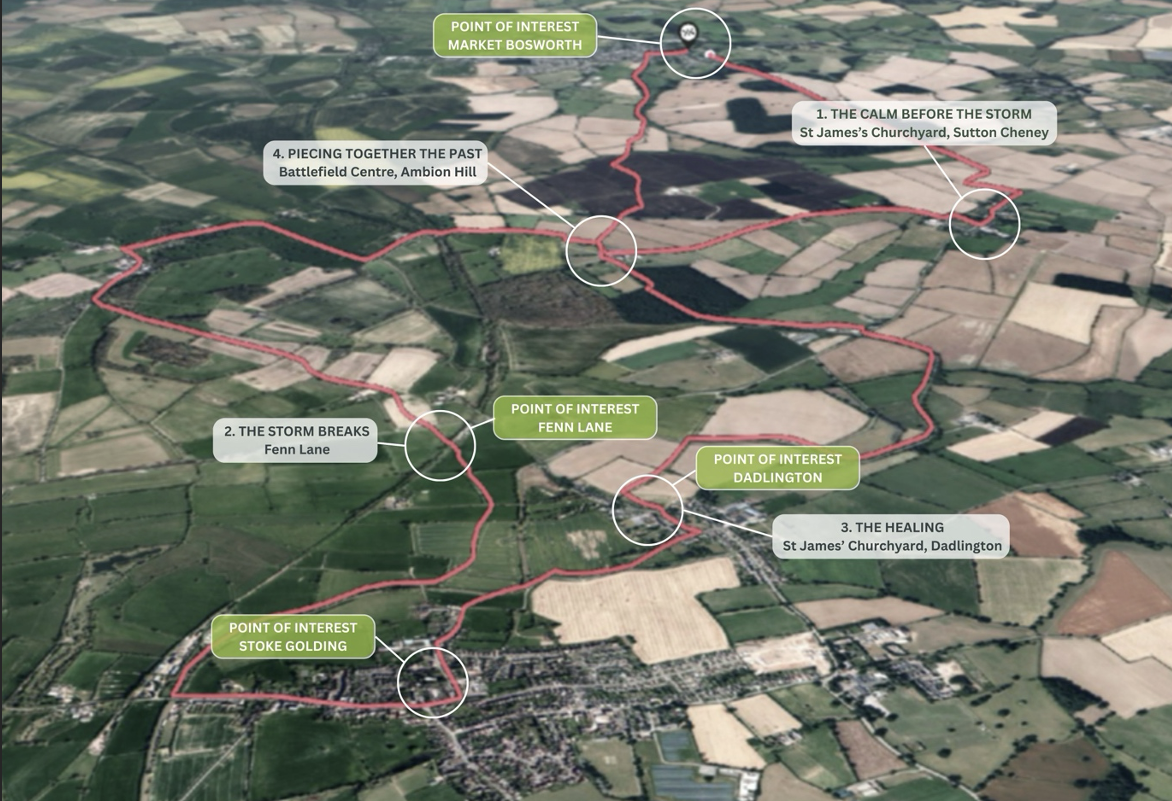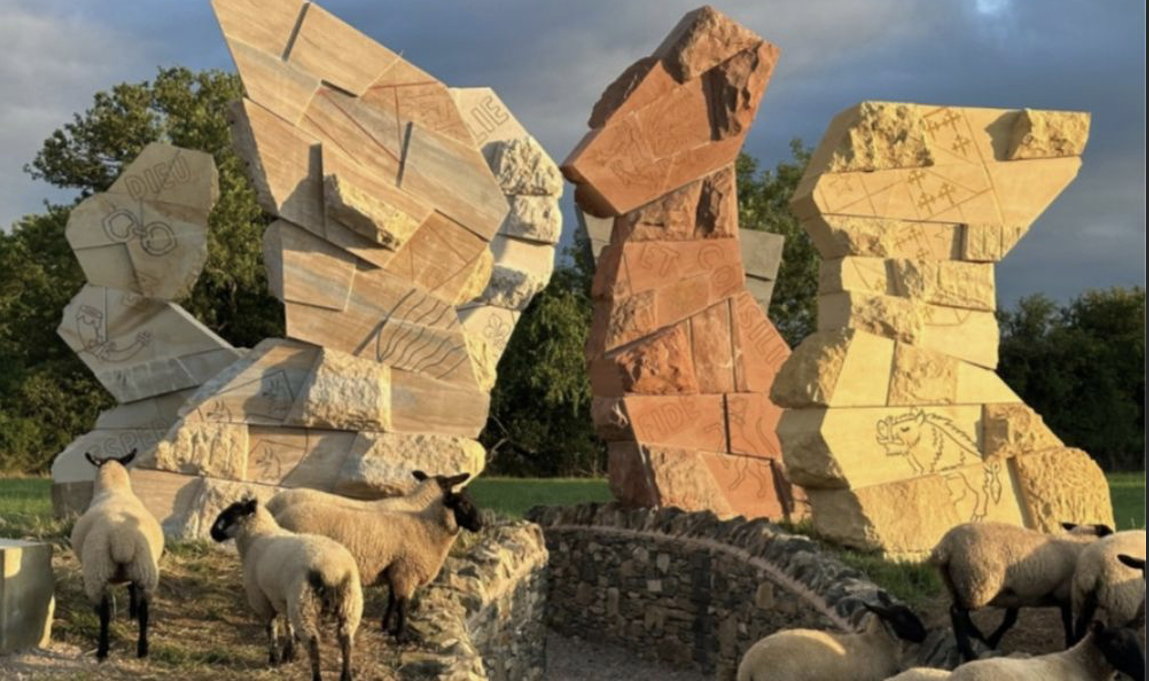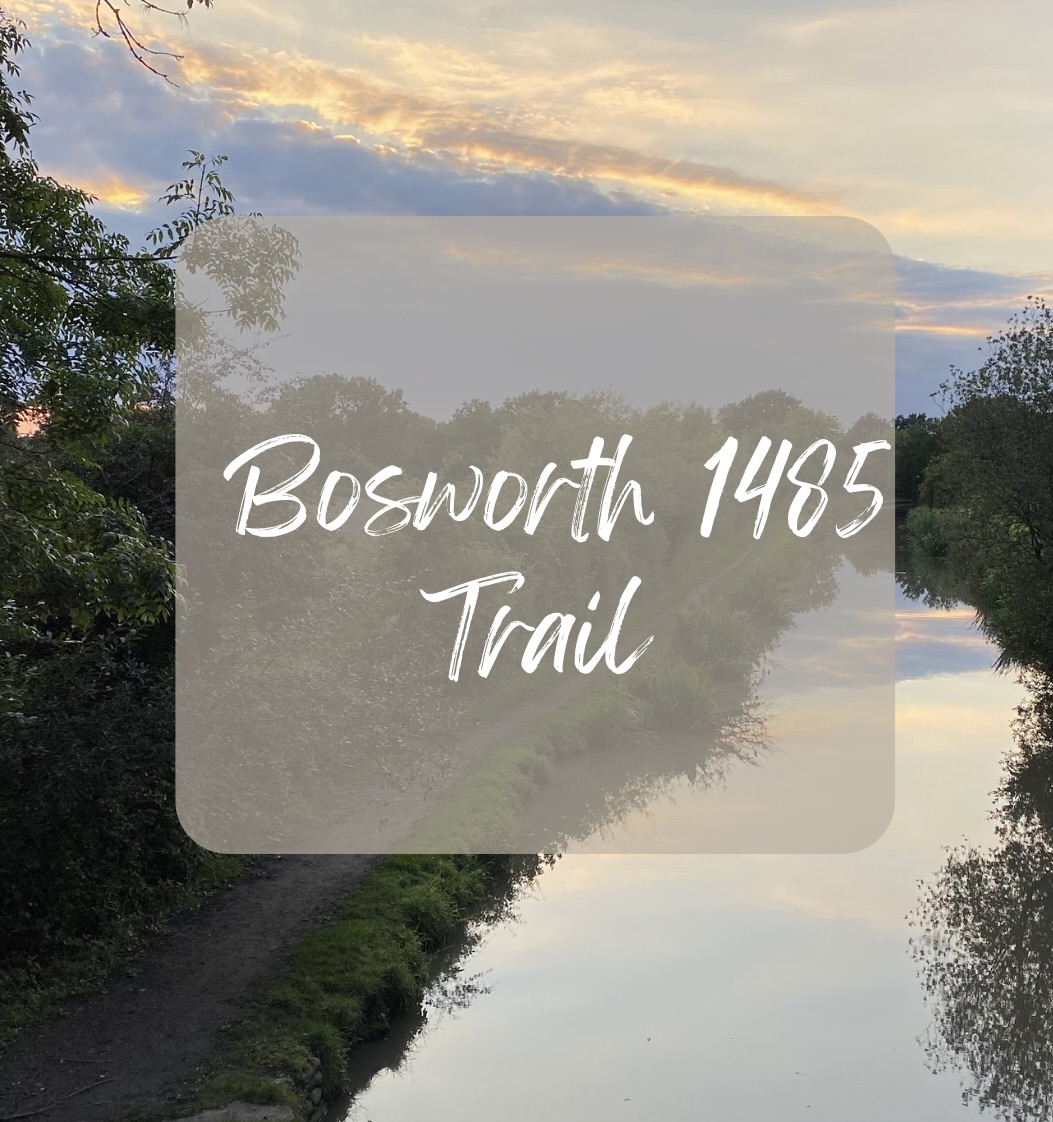Enjoy the historical “Bosworth 1485 Trail” ✨
The Bosworth 1485 trail is a powerful and immersive sculpture and walking trail that brings the story of the Battle of Bosworth Field to life, one of the most pivotal moments in English history. The circular route connects key historical locations tied to the events of 22 August 1485, when King Richard III lost his crown (and life) to Henry Tudor. This marked the end of the Plantagenets and the start of the Tudor dynasty. It’s designed to be both a scenic countryside walk and a reflective journey through history. Whether you’re a history enthusiast, a nature lover, or simply looking for a great walk, the Bosworth 1485 Trail offers an enjoyable and enriching experience!
Currently, the route covers 12 miles of countryside with a total ascent of 225 metres. Some of this is on tarmac, but most is on country paths, you may need your walking boots! Allowing for breaks, an experienced walker in good health could complete the circuit in a day.
The route has been designed with flexibility in mind, with alternative shorter routes and car accessibility available, explore the story in your own way. Market Bosworth, the historic town, is only a ten minute drive from Mallory Meadows, the perfect launchpad for your adventure!

Click here for more details on walking routes and accessibility
Chapter one:
The calm before the storm

This is an artwork about meditation.
A moment of quiet, a moment where tension becomes calm.
According to legend, on the night before facing Henry Tudor in battle, Richard III sought solace within the walls of St James’s Church in Sutton Cheney. With the fate of his men and the destiny of England weighing upon him, he turned inward. In that quiet moment, stripped of royal authority and grandeur, he was simply a man kneeling in prayer, confronting the uncertainty of dawn and the reckoning it might bring.
Sculptor Stephen Broadbent began the creative process by crafting a series of wax maquettes, which laid the groundwork for a detailed plaster scale model. This model then served as a vital reference for sculptor mason Ade Wright. He brought the final form to life in Portland Stone.
Massive blocks of Portland Stone, each weighing around 10 tons, have been carefully positioned on top a precast concrete base. Using traditional hand tools and a simple pointing device, Ade meticulously carves the sculpture’s contours.
To capture Richard’s likeness, a full-size wax portrait was sculpted. From this, a rubber mould was cast providing the precision needed for Ade to expertly shape the king’s head in stone with remarkable fidelity.

Look out for the wood carved crown towards the back of the church yard too!
Chapter two:
The storm breaks

This is an artwork about untamed forces.
When power collides with power, the world holds its breath. The atmosphere thickens, charged with tension, and in a single heartbeat, everything can shift. In the chaos, perception warps—time stretches, ordinary men rise to legendary stature, and their choices echo like myth. Yet to the distant eye, it may seem like nothing more than shadows moving across a quiet field.
This installation invites movement and reflection, unfolding its story step by step as you walk through. This diverse array of stone, gathered from across the British Isles, forms its foundation. Each type chosen to echo the fractured identities of the opposing factions and the chaos that civil war leaves in its wake. The shifting textures and tones of the materials mirror the instability of the era. Offering a journey through conflict, fragmentation, and uneasy unity.
Chapter three:
The healing

This is an artwork about reflection and reconciliation.
The battle has concluded, the blood has been shed, and the crown won. Only now does the real work commence.
In the quiet grounds of St James the Greater, Dadlington, where the remains of the fallen from both sides were laid to rest, Henry VIII granted a licence for a chantry priest to offer prayers in their memory.
This deeply historic and contemplative setting, coupled with the church’s Grade II listing, has inspired a design of modest scale and quiet dignity. Rather than imposing, the installation invites presence through subtlety.
The seating, sculptural in form yet informal in arrangement, seeks to foster habitual moments of stillness and introspection. Crafted once again from stone, the material serves not only as a nod to tradition and endurance but also as a thread that binds this piece to the preceding works. In its simplicity, it becomes a vessel for reflection, remembrance, and connection.
Chapter 4:
Piecing together the past

This is an artwork about archaeology.
No one can be sure what happened on the 22 August 1485, that one day has long gone. However, all around these fields, hidden in the landscape are clues. Cannonballs, badges, fragments of weaponry buried undisturbed for so long. These don’t speak for themselves, they must be pieced together to form a story, like a puzzle. There are always some pieces missing so there is always more than one story they could be telling.
Scattered fragments of metal have been carefully assembled into the beginnings of a circular form, an object that resembles a coin, though much of it remains incomplete and translucent. Its outline is now discernible, yet its identity shifts depending on the angle from which it’s viewed.
From one perspective, the emerging image reveals the profile of Richard III, suggesting a narrative of decline and finally the closing chapter of his reign. But when turned, the same fragments conjure the face of Henry VII, marking the rise of a new monarch and the dawn of a different era.
Chapter five:
This is an artwork about the journey.
Linking each location is a walking trail that takes us through the landscape. The process of leading us from one chapter to the next is cumulative, in the sense that the trail is taking us not just from field to field, but on a journey through a story. Hence, completing the trail brings with it a sense of having arrived at an understanding – of the landscape, of a slice of history, of themes we see being played out in the world around us. This is the fifth artwork, the entirety of the trail.

🧳 Planning Your Trip to Leicestershire?
Mallory Meadows offers four cosy cabins and two boutique roundhouses—each with a private hot tub and surrounded by nature. Pair your stay with one of these incredible Sunday lunch spots and make your weekend truly unforgettable.
✨ Explore more in our FREE Mallory Meadows Digital Guide, Packed with local tips, walking routes, and dining recommendations to help you plan the perfect countryside escape.

